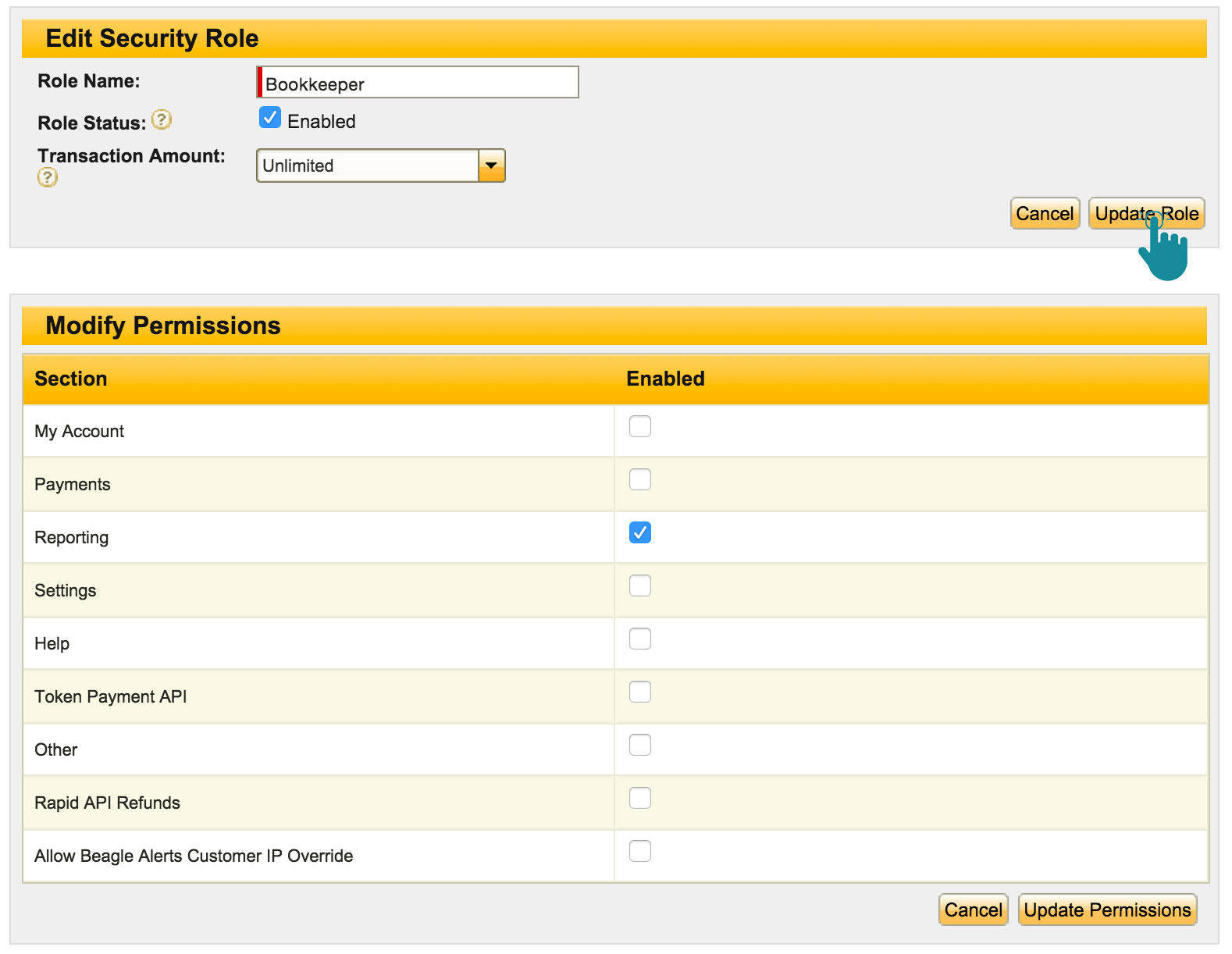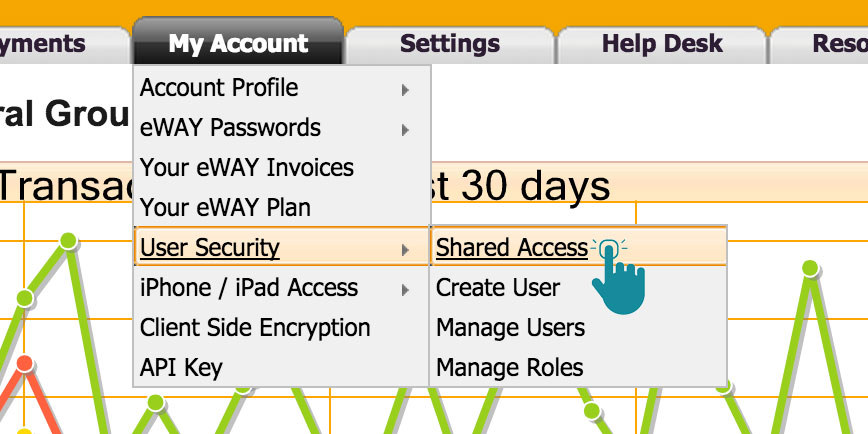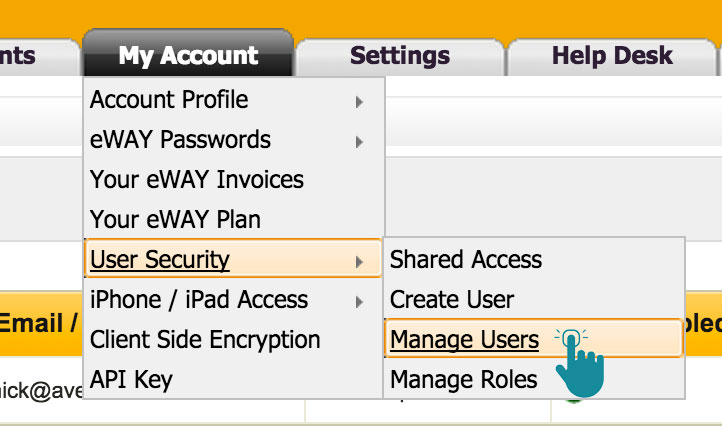

Let's Chat!
Tailoring the right solution for each business is what we are passionate about. Based on an initial chat with you, we'll be able to prepare a unique proposal for you and your business. We are based in Brisbane
Take a moment to connect with us using the form below, or call us directly on:
1300 255 337 (Mon. to Fri. 10 am - 4 pm):
A lot of businesses are managing their payments internally and have an external bookkeeper for reconciliations. This article can teach you how to give your bookkeeper or accountant read only access to your eWay account, in order to view settlement reports for reconciliation.
Create Read Only Security Role
Go to MYeWAY and hover over My Account, then go to User Security and click on Security Roles

Enter Role Name (e.g. Bookkeeping), ensuring that Role Status is enabled, (transaction amount is irrelevant at this stage, as we will block access to making transactions later on). Click Create New Role.

Confirm creation and click Continue.

Go to drop down menu next to the newly created role and click Edit Role.

In Modify Permissions, untick all sections except for Reporting and click Update Role.

Confirm new roles permissions by clicking Continue.
Allow Shared access
The next step is to allow your bookkeeper or accountant to have appropriate access to your eWay. Go My Account, and then User Security, and click on Shared Access.

When your bookkeeper or accountant requests access to your eWay, you can change their status to Allowed and do not forget to click Save.

Also, you need to make sure that the top-level partner user that is mentioned in Login (as above), has access to the restricted security role that we created before. Go to My Account, and then User Security, click on Manage Users.

Go to Actions, drop down for the user and click Edit User.

Make sure that Security Role is set to newly created one: Bookkeeper.

If you have any questions, please contact our bookkeeping team - they are always happy to help.

Subscribe by email and instantly get FREE Illustrated eBook. Adequate ‘positive’ cash flow is essential for the survival of any business, yet this is something that over 50% of small business owners struggle to manage.

